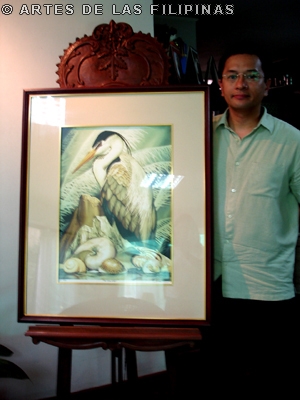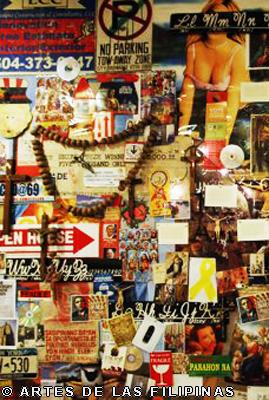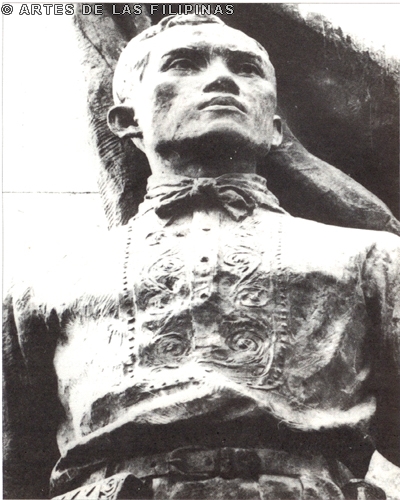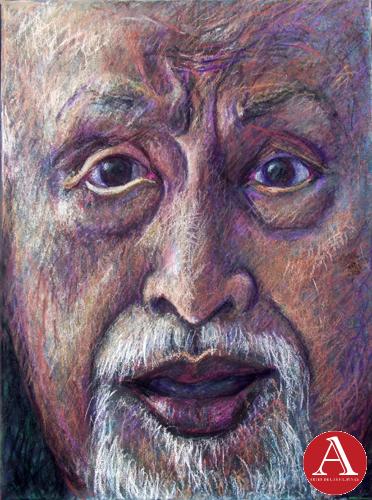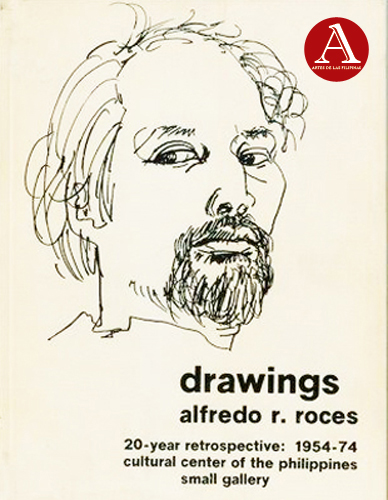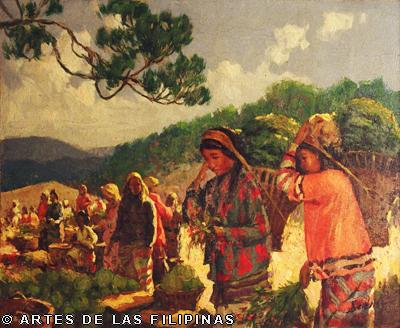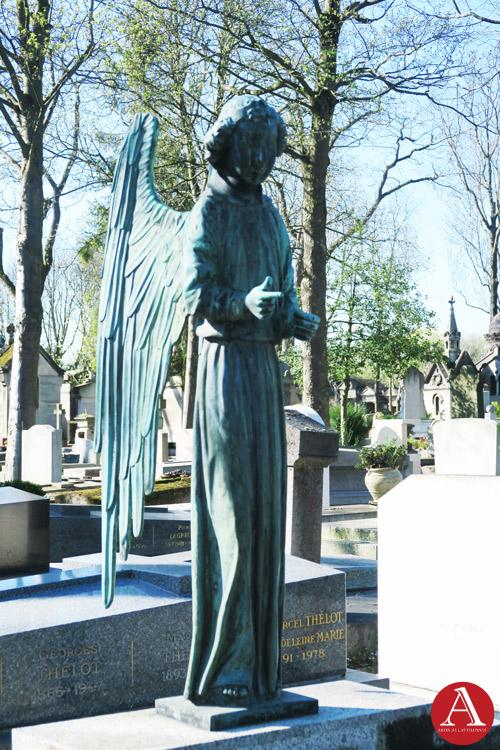
SHOUTING IN BRONZE:
The Lasting Relevance of Andres Bonifacio and His Monument in Caloocan
by: Michael Charleston Chua
Amidst the concrete jungle in the middle of the city of Caloocan, amongst the smog of pollution, stands the dignified figure of Andres Bonifacio—national hero, Founder of the Katipunan, Father of the Filipino Nation, the great plebeian who spearheaded the Filipino revolution against the Spaniards. The Bonifacio Monument is mute, but Bonifacio’s eyes made of bronze were shouting, reminding us for a moment to stop from the gray and frenzied hurly-burly of city life, and reflect on the greatness of the “Supremo.”
Andres Bonifacio (b. 30 November 1863, d. 10 May 1897), was a self-taught orphan who became a theater actor and an employee of two international companies in Manila. His social consciousness and deep understanding of his culture led to his involvement in Dr. José Rizal’s La Liga Filipina, and in founding the Kataastaasang Kagalanggalangang Katipunan ng mga Anak ng Bayan (The Highest, Most Venerable Association of the Sons of the People), or the Katipunan, in 1892. The movement’s membership increased when he assumed the leadership as the “Supremo” and in August 1896, started the revolution which will eventually bring down the three centuries of Spanish domination in the Philippines. In 1897, when politics prevailed among the Katipuneros in Cavite, Bonifacio was replaced by Gen. Emilio Aguinaldo as leader of the revolution, in a series of events which led to the Supremo’s execution by men from the organization he himself founded.
Work on the monument started when Doña Aurora Aragon-Quezon placed a cornerstone on the site on the birth anniversary of Bonifacio, 30 November 1929. A competition was launched and sculptors submitted proposals for the design of the monument using aliases. The design chosen was that of Guillermo Tolentino, a graduate of classical sculpture in Rome. The monument, which was inaugurated on 30 November 1933, is regarded as one of the world’s finest monuments.
At the top of the 45 feet high obelisk is a figure very similar to the classical sculpture “Winged Victory.” The octagonal base represents the first eight provinces that revolted against Spain in 1896. Around the obelisk, 23 figures in darkened bronze depict the events that led to the Philippine Revolution: The execution of the three martyr priests Gomez, Burgos at Zamora, and the injustices committed by the Spanish colonizers against the Filipinos.
The dominating figure of course is that of Andres Bonifacio, calm and dignified amidst the turbulent events around him, with bolo on one hand and a revolver in the other. Behind him is the figure of Emilio Jacinto, brains of the Katipunan, and a standard bearer. Surrounding the triad are two bolo-wielding Katipuneros symbolizing the spirit of the first cry of the revolution in Balintawak—the call to arms and the people’s response to this call.
The monument was constructed during the time when the issue of Philippine Independence from the Americans was being deliberated upon, and when many of those who participated in the revolution led by Bonifacio were still around—nationalistic feeling around the country was very much intense, and not a few got emotional seeing the monument. Some say, that although Tolentino sculpted all the other figures in the realistic style (where the pain and suffering of the Filipinos were greatly manifested), the figure of Bonifacio in Barong Tagalog was the only figure done in the classical style (imitating the Graeco-Roman figures that show no emotions). It was said that this is what the Americans wanted because a defiant Bonifacio might inspire another rebellion.
But according to Tolentino’s student, Napoleon Abueva, the suffering figures and the dignified Bonifacio shows that whatever happens, they will prevail:
“…the hooded head with the ever-tightening garrote about to nip a life, the hapless mothers and forsaken children in Tolentino’s monumental masterpiece, allow us to relive the sufferings and dire consequences of the times… The tragic related events and corresponding feeling of desolation, of hopelessness that Tolentino’s figures evoke, contrasted by the stance of soaring confidence and hope in Bonifacio’s expressive gesture, together with the defiant bolo-wielding compatriots, provide a reassuring promise of eventual success at all costs—reminding us of an old saw which goes this way: Great was the sacrifice and great was their reward.”
For Abueva, a look at the monument will give a feeling of pride in the resilient Filipino spirit, “…the legacy of a promising tomorrow gleaned from a cruel and troubled past, the accounts and instances of utterly depressed feeling, buoyed up and transformed to lofty feelings of inherent pride and enrichment of the Filipino soul…”
The monument is a testament to the superiority of Tolentino as a visual historian. In preparation for the construction of the monument, he interviewed people and went to the extent of using the bone structure of the Supremo’s sister, Espiridiona Bonifacio, in making the head of the Supremo. Despite the research, the monument was not spared from controversies. It depicted Bonifacio far from the stereotype of him at that time as a man dressed in camisa de chino with a bolo at one hand and the Katipunan flag on the other, yelling like wild. Ambeth Ocampo writes:
When the protests came in, Tolentino countered his critics with his research. The likeness was based not only on a photograph of Bonifacio, but on the bone structure of his sister Espiridiona as well. Interviews of surviving Katipuneros gave an idea of his attire and revealed that, contrary to popular belief, Bonifacio favored in battle his gun over his bolo. One account says that on their way to Caloocan in 1896, many Katipuneros traveled disguised as women to get past the Spanish police and military. To make his baro’t saya more convincing, Bonifacio had to leave his bolo behind and take his gun instead. Tolentino left no stone unturned in his research, and he was prepared to show documentation for such minute details as the position of the holster on Bonifacio’s belt. Over and above all this, Tolentino even consulted espiritistas to discern the true likeness and character of Bonifacio.
In 1973, the title National Artist for Sculpture was conferred on Tolentino in 1973.
The site of the monument in Caloocan was aptly named “monumento” by the people themselves, and for a long long time it was the landmark for traveller’s from the north that they’re entering Manila through the MacArthur Highway. That’s why the sight of the monument gives a feeling of journey’s end, until the North Luzon Expressway and Castrillo’s The Resurrection replaced monumento as Manila’s gateway from the north.
Today, because it has become part of the daily lives of the people of Caloocan, it seems that the monument is being neglected and only a few people notice the beauty and ponder on the significance of the monument. But recently, the monument caught attention once again in 2002, when its transfer to faraway Tala in the same city was proposed by Mayor Rey Malonso to give way for the Light Rail Transit Extension. This move was prevented by a resolution by the National Historical Institute, signed by its chairman Ambeth Ocampo, which reminds everyone that the Bonifacio Monument is a national shrine and that transferring it would be against the law.

The lasting relevance of the monument is a reflection of the continuing importance to the people of the life and heroism of Manong Andres himself. Militant groups, in many protests, rally around another statue of his in Manila. In 1997, a book by the American historian Glenn Anthony May who brought out questions on what we know about the Supremo, sparked a debate among scholars on the Philippines. With the centennial of the Philippine Revolution and the Proclamation of Philippine Independence in the 1990’s, recent scholarship clarified misconceptions. Before, the impression was that the educated Gen. Emilio Aguinaldo was superior in terms of leadership and military skills than the impulsive Bonifacio. But the Supremo was found out to be an excellent organizer with a movement whose members spread out across the archipelago (Ferdinand C. Llanes (ed), Katipunan: Isang Pambansang Kilusan, 1994); a military tactician informed of pre-colonial war strategies of the Filipinos which used the natural environment to their advantage (Zeus A. Salazar, Ang ‘Real’ ni Bonifacio Bilang Teknikang Militar sa Kasaysayan ng Pilipinas, 1997; Zeus A. Salazar, Agosto 29-30, 1896: Ang Pagsalakay ni Bonifacio sa Maynila, 1995); the first president of the revolutionary government (and of the country) who had a clear idea of the Filipino nation in Katagalugan, which he defined as all people who were born in the whole archipelago and not just the Tagalogs (Milagros C. Guerrero, et. al., Andres Bonifacio and the 1896 Revolution, 1996); and the leader who urged his compatriots to have bait, puri at dangal (rooting itself to the values of our ancestors) just as they were brave (Milagros C. Guerrero, Pagtanaw sa Kasaysayan, Paghahanda sa Himagsikan: Mga Ideya ng Katipunan, 1892-1897, 1998). With these and many other new studies, Andres Bonifacio emerges as a leader who wanted not just mere political independence, but kaginhawahan—materially and morally free—just as our ancestors were before the colonizers came. They remain to be our aspirations for a better country, the same one that Bonifacio and our forebears before us fought for and symbolized by his monument.

Landmarks, such as the Bonifacio Monument, are reminders of our past that made us what we are today. Landmarks do not feed us physically for sure. But man doesn’t live by bread alone, for he has a soul that searches for identity and belonging. The monument is a proud reminder of the greatness of our bloodline we all belong to, and of the victorious revolution we waged in 1896-1898. To neglect these national treasures is like forgetting our own personal past and genesis—amnesia—and forgetting the heroes of 1896 is like forgetting the sacrifices of our own parents. If we would lose the landmarks of our past, how would we ever know where we are, and where we are going as a nation?
As we gaze upon the Supremo and the men and women around that obelisk, let us think about the sacrifices of those before us who did not sleep in the dark of night, those who sacrificed their lives for the freedom of their children—for us. They want us to carry on with what they had fought for, not by the bolo in a time of revolution, but simply by being productive and vigilant citizens, just like the Supremo more than a hundred years ago. As if we can hear him call on us from those bronze figures once again with his words from the Dekalogo ng Katipunan: “Ang pagsusumikap at pagpipilit na kumita ng ikabubuhay ay nagpapahayag ng tunay na pagmamahal sa sarili, sa asawa, anak, kapatid, at kababayan.” (Diligence in the work that gives sustenance to thee is the true basis of love — love for thine own self, for thine wife and children, for thine brothers and countrymen.) Personally, I see the monument as a reminder of how a working class hero made a difference, and how we can too.
Photo Credits:
Bonifacio Monument by night, taken on 25 February 2007 by Ramir Borja.
Bonifacio Monument by day, Bonifacio and Jacinto, and Winged Victory, photography by
Prof. Enrico Gerard R. Azicate.
Detail of Bonifacio Monument, from Medina, Great Lives: Andres Bonifacio, 1992, p. 28.
Portrait of Andres Bonifacio from the Emmanuel N. Encarnacion Collection.
Consulted Works and Sources:
Acero, Francis. Thoughts on the Bonifacio Monument. Online, Internet. Available URL: https://tinig.com/v12/v12francis.html.
Agoncillo, Teodoro A. The Revolt of the Masses: The Story of Bonifacio and the Katipunan. Quezon City, U. of the Philippines P., 1956.
Bonifacio, Andres. “Decalogue” sa The Writings and Trial of Andres Bonifacio (translated by Teodoro A. Agoncillo and S. V. Epistola. Manila: Antonio J. Villegas; Manila Bonifacio Centennial Commission; University of the Philippines, 1963, p. 1.
Churchill, Bernardita Reyes. Determining The Truth: The Story of Andres Bonifacio (being critiques of and commentaries on Inventing a hero, the post-humous re-creation of Andres Bonifacio). Manila : Manila Studies Association, 1997.
Cristobal, Adrian E. The Tragedy of the Revolution. Quezon City: U. of the Philippines P., 2005.
De los Reyes, Isabelo. The Religion of the Katipunan or the Old Beliefs of the Filipinos (translated by Joseph Martin Yap). Quezon City: Teresita A. Alcantara, Ph.D., 2002.
Estrada, Eric and John Realubit. “Bonifacio Monument Stays Put” in Manila Times, 25 January 2003. Online, Internet. Available URL: https://manilatimes.net/national/2003/jan/25/metro/20030125met5.html.
FHL Research Team . The Bonifacio Monument: Hail to the Chief! Online, Internet. Available URL: https://librarylink.org.ph/featarticle.asp?articleid=50.
Guerrero, Milagros C. “Pagtanaw sa Kasaysayan, Paghahanda sa Himagsikan: Mga Ideya ng Katipunan, 1892-1897,” Kasarinlan: A Philippine Quarterly of Third World Studies, Vol. 14, Num. 1, 1998, pp. 37-52.
Guerrero, Milagros C., Emmanuel N. Encarnacion and Ramon N. Villegas. “Andres Bonifacio and the 1896 Revolution,” Sulyap Kultura, Second Quarter 1996, pp. 3-12.
Ileto, Reynaldo Clemeña. Pasyon and Revolution: Popular Movements in the Philippines, 1840-1910. Quezon City: Ateneo de Manila U.P., 1979)
Llanes, Ferdinand C. (ed). Katipunan: Isang Pambansang Kilusan. Quezon City: Trinitas Publishing, Inc., 1994.
Maceda, Teresita Gimenez. “The Katipunan Discourse on Kaginhawaan: Vision and Configuration of a Just and Free Society,” Kasarinlan: A Philippine Quarterly of Third World Studies, Vol. 14, Num. 2, 1998, pp. 77-94.
May, Glenn Anthony. Inventing A Hero: The Posthumous Re-creation of Andres Bonifacio. Quezon City: New Day Publishers, 1997.
Medina, Isagani R. Great Lives: Andres Bonifacio. Makati City: Tahanan Books for Young Readers, 1992.
__________. (ed). Ilang Talata Tungkol sa Paghihimagsik (Revolucion) Nang 1896-1897 Isinulat ni Carlos Ronquillo y Valdez (Hongkong 1898). Lungsod Quezon: U. of the Philippines P., 1996.
Navarro, Arthur M. and Raymund Arthur G. Abejo (eds). Wika, Panitikan, Sining at Himagsikan. Lungsod Quezon: LIKAS, 1998.
Ocampo, Ambeth R. Bones of Contention: The Bonifacio Lectures. Pasig City: Anvil Publishing, Inc., 2001.
__________. Bonifacio’s Bolo. Pasig City: Anvil Publishing, Inc., 1994.
Salazar, Zeus A. Agosto 29-30, 1896: Ang Pagsalakay ni Bonifacio sa Maynila (salin ni Monico M. Atienza). Quezon City: Miranda Bookstore, 1995.
__________.”Ang ‘Real’ ni Bonifacio Bilang Teknikang Militar sa Kasaysayan ng Pilipinas,” Bagong Kasaysayan: Mga Pag-aaral sa Kasaysayan ng Pilipinas Lathalain Blg. 1. Mandaluyong City: Palimbagang Kalawakan, 1997.
__________. “Si Andres Bonifacio at ang Kabayanihang Pilipino,” Bagong Kasaysayan: Mga Pag-aaral sa Kasaysayan ng Pilipinas Lathalain Blg. 2. Mandaluyong City: Palimbagang Kalawakan, 1997.
Sison, Marites. National Artist Guillermo Tolentino: Monumental Spirit. Online, Internet. Available URL:https://filipinasmag.com/Main/Sept2003Tolentino.htm.
Ventura, Sylvia Mendez. Supremo: The Story of Andres Bonifacio. Makati City: Tahanan Books for Young Readers, 2001.
Michael Charleston B. Chua is currently an instructor and a graduate student of the Department of History, University of the Philippines at Diliman, where he also finished his BA in History (2005). He is a member of the Bagong Kasaysayan (BAKAS), Inc, Philippine National Historical Society (PNHS) and the Asosasyon ng mga Dalubhasa, May Hilig at Interes sa Kasaysayan (ADHIKA) ng Pilipinas, Inc. Had lectured on different topics in different places and had been interviewed a number of times for local and national television.


